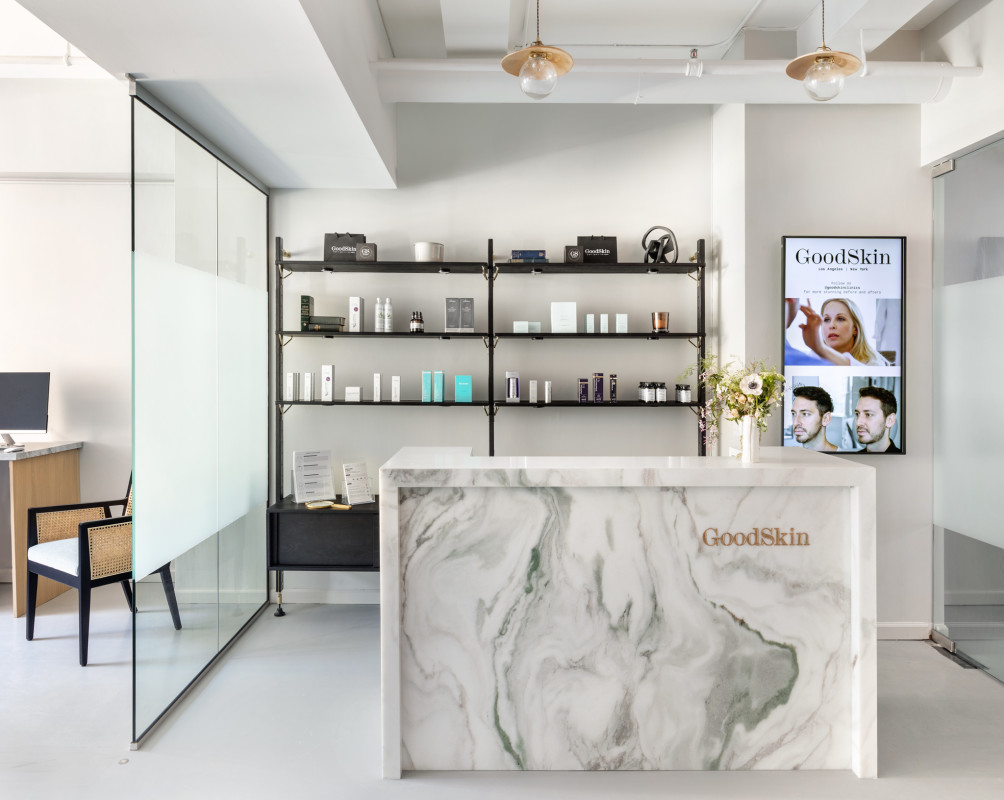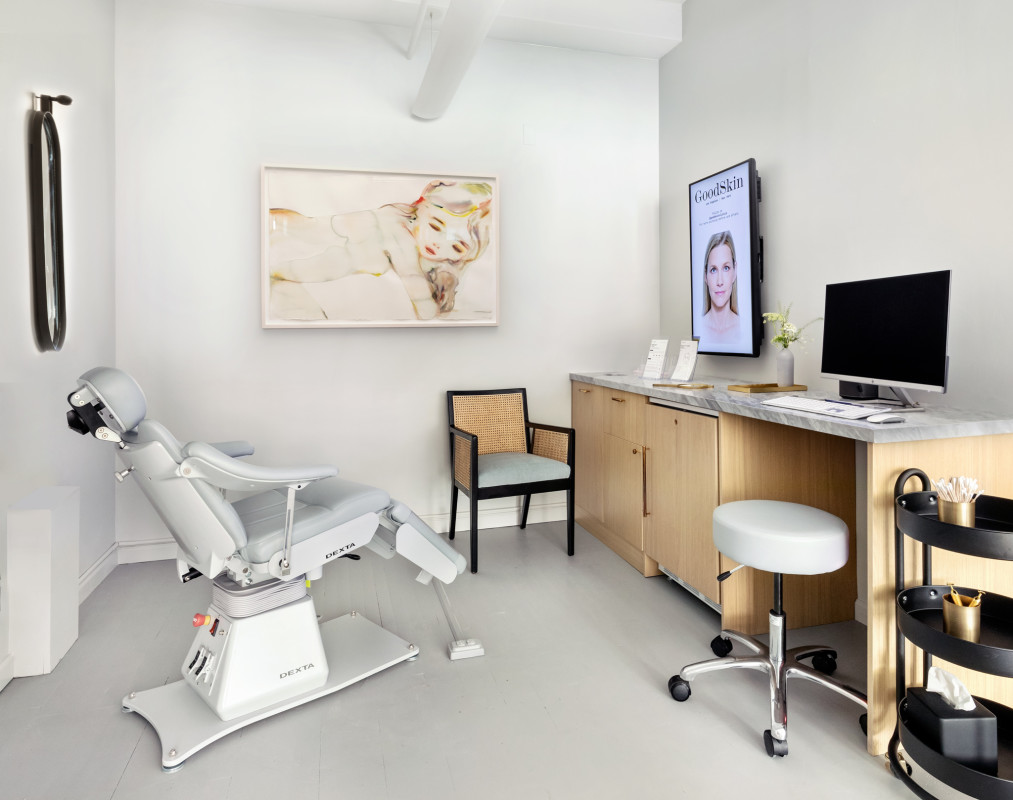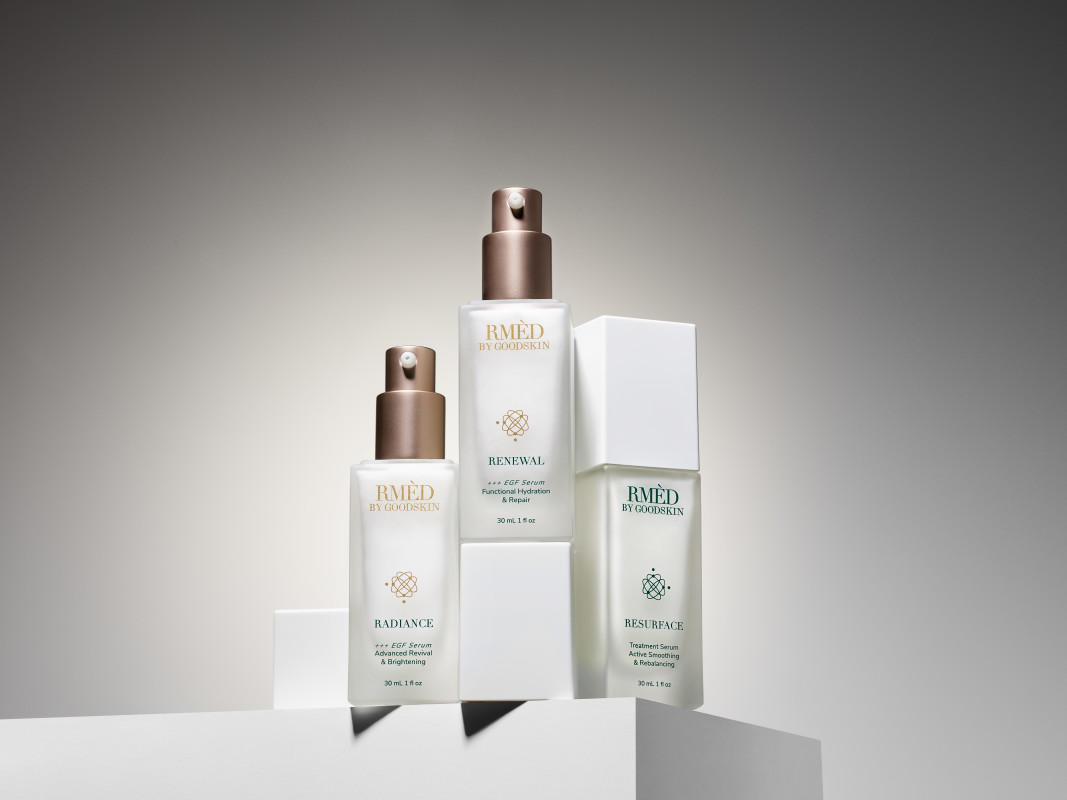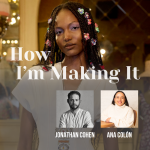The popularity of injectables shows no signs of slowing down. According to a report from the American Society of Plastic Surgeons, use of neuromodulators like Botox, Dysport, Xeomin and Jeuveau saw a 73% increase between 2019 and 2022 in the United States, while the use of fillers spiked 70% in that same time period. But what if, despite their ever-increasing ubiquity in the aesthetics market, we’re still getting a whole lot wrong when it comes to injectables and non-invasive procedures?
“Most clinics cater to their clients’ desires and provide trendy recommendations,” explains Lisa Goodman, a PA and the founder of GoodSkin Clinics, which offers aesthetics treatments at outposts in New York City and Los Angeles. “This often leads to a client appearing noticeably ‘done’.”
The way European practitioners approach injections, though, is completely different. “I spent many years practicing in the U.S., but it wasn’t until I studied under plastic surgeons in Europe that I learned about a holistic approach,” she says.
By combining a “holistic” technique to injecting with technology available in the U.S., Goodman and GoodSkin are delivering long-term results to patients that consider the entire anatomy of the face rather than individual areas to be treated independently of one another.
“With 18 years of experience in the field, I can confidently assert that micro-injections, which are predominant in America, do not provide lasting results,” says Goodman. “While they offer immediate gratification and a sense of control, they often fall short over time. In fact, virtually every case I’ve encountered where a client looks puffy or unnatural can be attributed to micro-injections. Treating symptoms rather than addressing the root causes of aging necessitates more extensive maintenance and corrections in the long-term, increasing the risk of significant damage.”
The pandemic — and the amount of time we continue to spend staring at ourselves on camera and assessing our every pore and line while working from home — is a key factor contributing to the ongoing injectables boom. But although we may consider ourselves experts on every purported flaw and issue of our own faces, this is actually doing more harm than good, Goodman argues.
“The impulse for many people is to self-diagnose based on what they see in the mirror, making their own judgments on where they need Botox or filler,” she says. This, in the long run, can actually work against you. Instead, she encourages clients to look at photos from when they were younger, so as to “better grasp the transformative potential of our approach.”
Photo: Courtesy of GoodSkin
So, what is that approach exactly?
“We don’t simply plump and fill ‘problem’ areas — we use our tools and technology to address underlying causes and supplement those areas in a more natural way,” Goodman explains. “We take the natural aging process into account and proactively address potential issues, using a forward-thinking approach that ensures our clients leave with the best results both now and in the years to come.”
The result is GoodSkin’s trademarked “untouched” look that’s “rooted in healthy aging, not anti-aging,” per Goodman.
“In my view, injectables are not a cosmetic solution — they’re an arrow in the quiver of self-care, along with exercise, vitamins and other corrective wellness measures,” she adds. “They’re a supplement to nature, meant to preserve and sustain the healthiest and most vibrant sense of who we are.”

Photo: Courtesy of GoodSkin
To assess patients’ holistic needs, Goodman starts by analyzing their “natural genetic qualities”: bone, muscle, skin, fat and fascia. “This gives us the necessary insight into your aging process and provides a foundation for your entire treatment plan,” she explains. GoodSkin then relies on its six-step treatment process that consists of a diagnosis, developing a “Healthy Aging Plan,” assigning a team of practitioners within its clinics, putting the aforementioned European technique into action, assessing the overall aesthetic of a client and tracking the patient’s results via regular check-ins, photographic assessments and an ongoing relationship.
Goodman’s clientele — which allegedly includes an impressive celebrity roster, though the injector declines to drop names — prizes looking natural and like themselves above all else. “They come to us with the goal of appearing as the best, most well-rested version of themselves, with an aversion to looking overdone,” she says.
This also means that, instead of offering patients a standardized treatment menu of one-size-fits-all injection quantities and options, each tweak and syringe is customized to the individual.
“Each person has the right to choose their own aesthetic journey in life. And while my team and I believe in a transparent and collaborative process with clients, we do subscribe to a particular aesthetic, one that respects each individual’s natural beauty and retains signs of imperfection, like small wrinkles and hard-earned laugh lines,” says Goodman.
While GoodSkin approaches all of its clients with a personalized approach, there are some differences between the aesthetics philosophies of East Coast and West Coast clients.
“(My New York) clients value expertise, planning and not looking the same. They also value a long-term quality approach and want to be informed of the ‘why’ behind our treatment techniques, which we love to do,” Goodman says.
As for L.A.? Goodman is set on changing the way West Coasters approach aesthetics.
“I hope to inspire the L.A. aesthetic to be less focused on mini quick fixes that don’t serve well in the long-term and actually create more issues,” she says. “This is a re-education, and the more people that evolve, the more this industry will lose some stigma.”

Photo: Courtesy of GoodSkin
I first met with Goodman about six months before my wedding. I was familiar with her sterling reputation and meticulous approach to injectables, but I still have to admit that I expected a fairly straightforward Botox and filler experience. As a beauty editor, I’ve been getting Botox regularly since I was 26 (I’m now 33); I’ve also received lip filler probably five or six times over the past five years, and I’ve been fortunate to have access to some of the most experienced and trusted syringe wielders in the world. Yet, I’ve had my own fair share of trial and error: I have a small forehead and naturally heavy-set brows, so I have to be especially careful with treating my forehead, since neuromodulators can cause my brows to “drop” when used too liberally or in the wrong muscles, making me look angry and even more tired. I also bruise easily, and my musculature is naturally asymmetrical (as is most people’s), so there are certain challenges that come with administering these treatments.
I’d considered myself both experienced and well-educated on the subject of injectables, not just because of my own experiences, but because I’ve also researched, reported and written extensively on the subject — still, after my first session with Goodman, I was left questioning all of my supposed “expertise.”
As part of my initial diagnostic analysis, Goodman determined that the placement of the off-label masseter Botox I’ve been swearing by for years to soothe my jaw tension and slim my jawline was also, over time, contributing to a downturned “frown-y” effect at the outer corners of my mouth, as well as the premature development of “marionette” lines on my nasolabial folds. There were other eye-opening findings from this initial consult I won’t bore you with, but the point is: Even — or perhaps especially — for a beauty editor with plenty of experience receiving injectables from the most adept of practitioners, Goodman’s approach is revolutionary. And, much like the injections themselves, it can sting a little.
For me, the wake-up call to the inadvertent damage I’d been doing by getting so-called “preventative” injections since my mid-20s and newfound concerns about my prematurely sagging, wrinkle-forming face — six months out from my wedding, no less — was, frankly, a bit of a bummer. But that no-bullshit, tell-it-like-it-is approach is exactly what Goodman’s clients go to her for.
And luckily, she’s not just there to point out everything wrong with your face: She’s there to fix it, educate you on how you wound up there in the first place and shift the future trajectory of how your face ages in the long run. In my case, Goodman suggested tweaking the placement of my jaw Botox, adding some undereye filler and being extremely strategic about any forehead injecting to yield better long-term results.

Photo: Courtesy of GoodSkin
“While many providers can deliver short-term improvements, what truly sets us apart is our steadfast commitment to the long-term approach,” she says. GoodSkin regularly tracks its patients over time; earlier this year, Goodman even published a book chronicling the results of a variety of her patients, tracking their progress over the course of a decade.
“Over the years, this scientific documentation has been invaluable to our practice,” she explains. “It has allowed us to verify that our approach yields consistent and authentic results.” I has also allowed Goodman to identify and reflect on her “failures” as an injector.
“Most authors or practitioners don’t highlight their mistakes, but I think it’s important. I can count the number of ‘failures’ on one hand, and they all share a common cause: deviating from the (GoodSkin) method,” she notes. In three of the four instances, she says, she compromised to appease the client’s requests, either due to budgetary constraints or to accommodate a “quick fix” rather than a longer-term goal. “These three cases ultimately required correction,” she says. The fourth case of “failure” for Goodman was due to a patient developing an autoimmune condition, which resulted in negative reactions to treatments.
“They inspired me to delve deeper into the science of aging — to explore the impact of family and medical history, environmental factors and other underlying variables that shape a person’s physical appearance,” she says of these mistakes.

Photo: Courtesy of GoodSkin
This month, Goodman expanded her patient offerings with a direct-to-consumer skin-care line called RMÈD by GoodSkin. Developed to “bridge the gap between a derm perspective, the personalized client experience achieved in-clinic and the often-confusing task of shopping for effective skin-care formulas,” it features three treatment serums: Radiance, a brightening formula that’s spiked with biomimetic Epidermal Growth Factor (or EGF, an anti-inflammatory ingredient that optimizes skin cell function); Renewal, a reparative hydrating treatment that also packs EGF; and Resurface, a smoothing, exfoliating and rebalancing formula suitable for sensitive skin. Prices range from $125 to $185.
It all goes back to Goodman’s pithy philosophy: “Aging is inevitable, but how we age is up to us.” When asked what she wishes people in general better understood about aesthetics and injectables, she doesn’t hesitate.
“With microinjections and other superficial touch-ups, the likelihood is higher that you’ll need more and more — not only to correct or maintain your appearance, but also because of the psychological dependency that comes with excessive treatments,” she says. “I want people to understand that addressing root issues and focusing on slowing aging will change and restore functional anatomy, so you will need less and less over longer periods of time. Forward-thinking not only allows for the best long term aesthetic outcome, it also accounts for safety, minimizing future treatments and corrections, and saving you money over time.”
It’s something I — and plenty of other patients, no doubt — needed to hear.
Want the latest fashion industry news first? Sign up for our daily newsletter.



